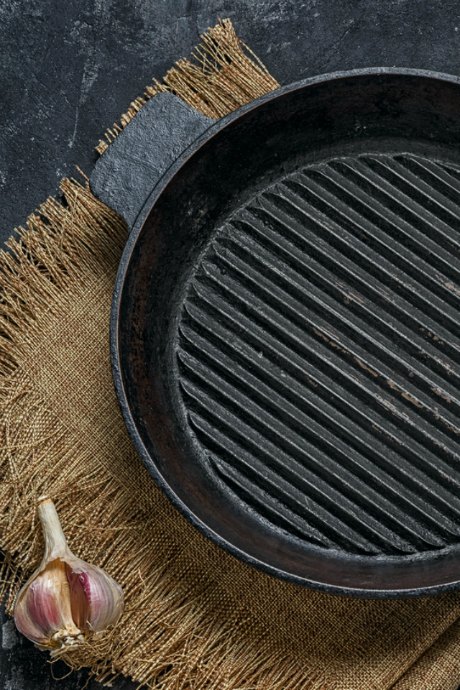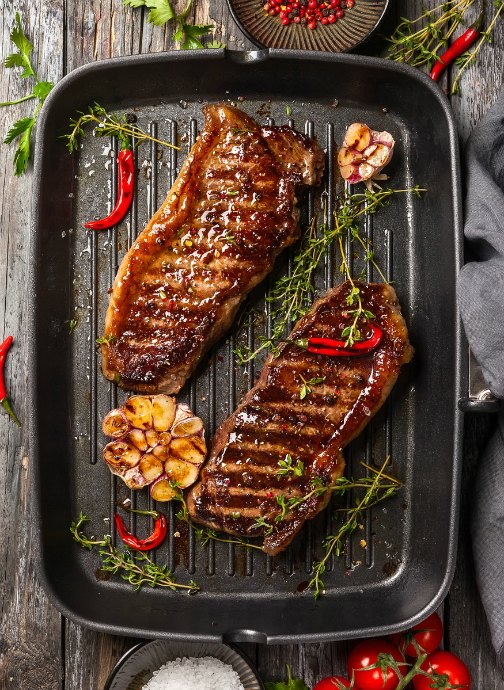Put Away the Charcoal and Get Out the Grill Pan
Posted by Julie on Jun 14th 2018
Grilling season has begun, and we couldn’t be happier. From all the cuts of beef to cook on the grill, to a variety of seasonal vegetables, we want to do all of our summer cooking and dining al fresco.
Unfortunately, that’s not always possible. Thunderstorms spring up, we run out of charcoal or propane, or we simply don’t have the energy to fire up the grill. Don’t order pizza or head out for fast food. Instead, get out your grill pan and continue with your dinner preparations.
What to Look For in a Grill Pan
The top-performing grill pans are made from cast iron and have high raised ridges. Cast iron can handle high heat, and it retains heat well too. That’s why it’s an excellent stand-in for grilling. Stainless steel pans are another option to consider if cast iron feels too cumbersome.

Grill pans are available in a wide variety of shapes and sizes. A double-burner size pan, like this one from Finex, will give you greater surface area to cook more food at a time. You can also choose from round or square pans, with or without lids, from brands like Staub and Le Creuset.
What a Grill Pan Can Do (and What It Can’t)
A cast iron grill pan with high raised ridges can go a long way toward mimicking an outdoor grill. The ridges are in contact with the food, and they concentrate the heat to char the food and make grill marks. The ridges also allow fat to drip and drain away. Water vapor escapes more easily too, so meat and vegetables are seared instead of steamed.
However, a grill pan can’t mimic the radiative heat of a grill. When food is cooking on a grill, heat has two sources: the hot surface of the grill plate and the heat radiating from the coals or burner. A grill pan generates minimal radiative heat. Food only touches the raised ridges, and it can take longer to cook. Poultry, pork, and ground beef must reach specific internal temperatures in order to be eaten safely.
Tips and Tricks to Improve Your Grill Pan Results
By far, the most common tip we’ve found is to preheat your grill pan at medium-high or even high heat. Then turn the burner down to medium-low while you cook. This helps ensure the cooking surface is hot enough, but not so hot that it will smoke. Preheating the pan also minimizes hot spots.
Don’t try to cook inch-thick steaks or a rack of ribs on a grill pan. Stick to thinner pieces of meat, or butterfly your cuts. Remember there’s very little radiative heat to help cook through larger foods. Choose boneless cuts of meat, and slice vegetables so they have a larger surface area.

Before you transfer any food to your grill pan, brush your pan and your food with oil. Don’t use a lot of oil — a light coating will do. Once you’ve put your meat or vegetables on the pan, leave them alone for a few minutes. Then you can rotate it and flip it to create grill marks.
Grill marks are a nice aesthetic, but you want to be sure your food is cooked through. Try putting a metal lid or bowl over the pan to help trap radiant heat. You can also put your pan in the oven at the highest temperature possible. The surface of the pan will be hot, and the oven will generate radiant heat (and keep it inside, as long you don’t open the door too frequently). Be sure to check the temperature of your meat to confirm it is fully cooked.
 Free shipping over $49
Free shipping over $49










